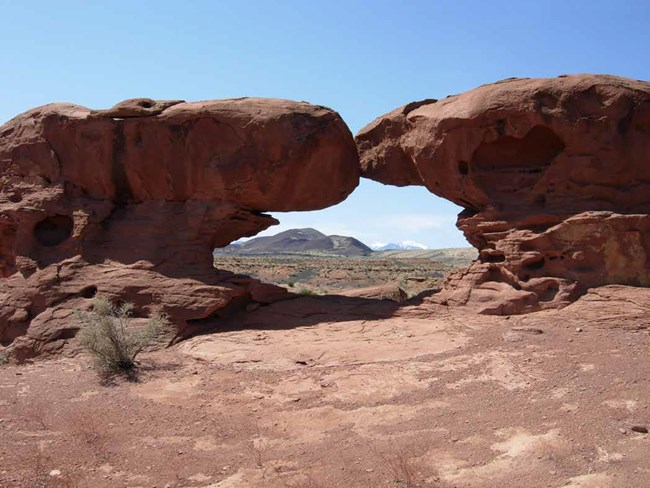Learn about NRCAs
The Natural Resource Condition Assessment (NRCA) Program provides framework, funding, and publishing support to parks to aid in the synthesis and documentation of natural resource conditions. Condition assessment reports are a tool to describe selected park resources, and record a snapshot of their current condition, identify trends, and identify potential or current threats and stressors. Understanding the condition and trend of natural resources is key for parks and NPS planners to appropriately prioritize and allocate stewardship resources.

NPS Photo.
Today, Wupatki protects 56 square miles (35,422 acres) of high desert directly west of the Little Colorado River and the Navajo Reservation. In this region of dramatic geologic landforms, climatic extremes, and scarce water, a diversity of plant and animal species has survived for thousands of years.
Traditional NRCA Report: 2018
In an effort to better understand and manage the natural resources of the monument, a Natural Resource Condition Assessment was completed, and published in 2018. In partnership with Utah State University, Colorado State University, and the Museum of Northern Arizona, monument staff selected 14 natural resource topics to include in the study:
- Viewshed |
- Little Colorado River riparian corridor |
|||||
- Night sky |
- Vegetation |
|||||
- Soundscape |
- Non-native and invasive plants |
|||||
- Air Quality |
- Earthcracks and blowholes |
|||||
- Sunset Crater tephra layer |
- Birds |
|||||
- Geomorphic stability of intermittent, ephermeral streams |
- American proghorn (Antilocapra americana americana) |
|||||
- Seeps, springs, and surface water |
- Wupatki pocket mouse (Perognathus amplus cineris) |
Natural resource conditions ranged from good for the landscape topics (i.e., viewshed, night sky, and soundscape), mammals, and vegetation to moderate concern for air quality, non-native invasive plants, and certain aspects of the water-related resources, such as seeps and springs and the Little Colorado River riparian corridor. Conditions of significant concern included the Sunset Crater tephra layer, aspects of water quantity, and erosion-related measures. The primary threats influencing these conditions are shared across resource categories, most notably climate change and increasing population and associated developments. Wupatki National Monument faces many threats due to an ever-increasing human population within and surrounding Flagstaff, Arizona and increasing temperatures and erratic precipitation events due to climate change. The monument’s proactive science program will become even more important in influencing resource conditions and identifying necessary adaptations in a rapidly changing environment.
For other reports and natural resource datasets visit the NPS Data Store.
Source: NPS DataStore Collection 7765 (results presented are a subset). To search for additional information, visit the NPS DataStore.
Last updated: August 15, 2024
